Also known as Orange Blossoms Genres Swing, dance, big band Active until 1963 | Origin Detroit Genre Big band | |
 | ||
Years active 1927 (1927)–1963 (1963) Albums Sounds of the Great Bands, Smoke Rings Members Glen Gray, Pee Wee Hunt, Si Zentner, Murray McEachern, Babe Russin | ||
Glen gray and the casa loma orchestra
The Casa Loma Orchestra was a popular American dance band active from 1927 to 1963. From 1929 until the rapid multiplication in the number of swing bands from 1935 on, the Casa Loma Orchestra was one of the top North American dance bands. With the decline of the big band business following the end of World War II, it disbanded in 1947. However, from 1957 to 1963, it re-emerged as a recording session band in Hollywood, made up of top-flight studio musicians under the direction of its most notable leader of the past, Glen Gray. The reconstituted band made a limited number appearances live and on television and recorded fifteen LP albums for Capitol Records before Gray died in 1963.
Contents
- Glen gray and the casa loma orchestra
- Casa loma orchestra 1941
- History
- Radio
- Recordings
- Film
- Songs
- References
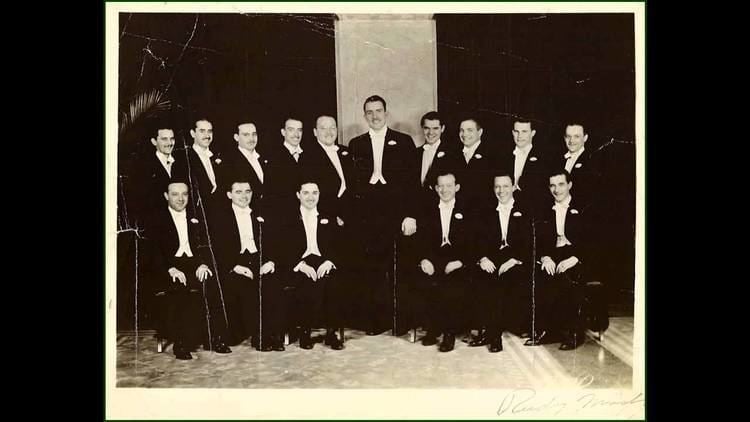
Casa loma orchestra 1941
History
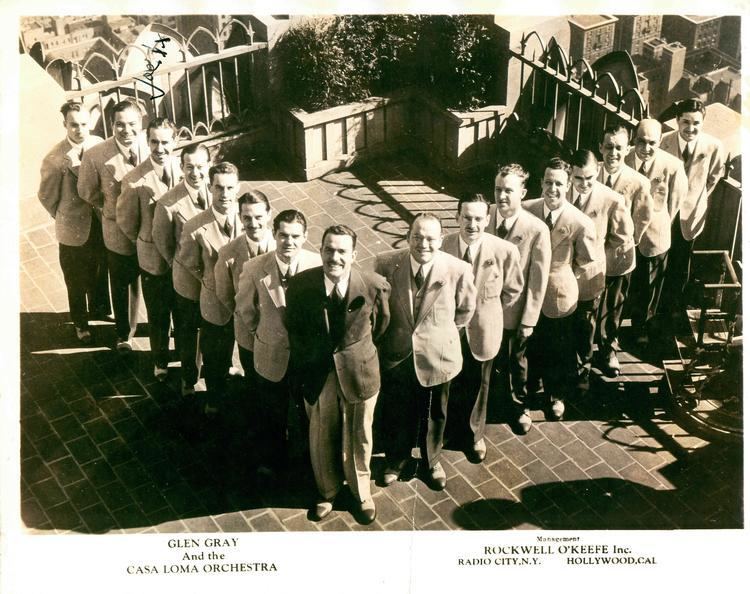
The future members of the band first came together in 1927 as the Orange Blossoms, one of several Detroit-area groups that came out of the Jean Goldkette office. The band had adopted the Casa Loma name by the time of its first recordings in 1929, shortly after it played an eight-month engagement at Casa Loma Hotel in Toronto. The band never actually played the Casa Loma under that name, still appearing as the Orange Blossoms at that time.
In 1930, the Casa Loma Orchestra was officially incorporated in New York as a corporation with the members all being owners / shareholders and board members of it. The band members were hired on the grounds of "musical and congenial" competence and followed strict conduct and financial rules. Because the band operated as a collective group, as opposed to almost all other bands that had a "leader" for whom everyone worked, the band maintained an extremely stable collection of personnel, that did not change very much as years passed. (It being a period when many bandleaders would not think twice about poaching musicians from other bands whenever they were inclined to and firing those being replaced in many instances with little or no notice given.) Members who broke the rules though, could be summoned before the "board", have their contract bought out and be ejected from the band.
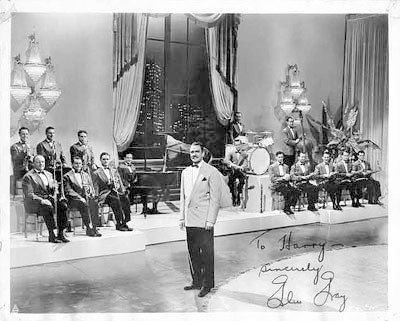
The band was fronted for the first few years by violinist Hank Biagini, although the eventual leader, saxophonist Glen Gray (1900-1963) was from the very beginning "first among equals." The complex arrangements called for talented musicians such as trombonist Pee Wee Hunt, guitarist S. Jack Blanchette, trumpeter Frank L. Ryerson, trumpeter Sonny Dunham, clarinetist Clarence Hutchenrider, drummer Tony Briglia and singer Kenny Sargent. Arrangements were by Gene Gifford, who also composed much of the band's book, Spud Murphy, Larry Wagner, Salvador "Tutti" Camarata and Horace Henderson. Gifford's arrangements were credited in large part to giving the band its sound, but even he fell victim to the band's strict rules, being bought out in 1935 due to alcohol-related infractions.
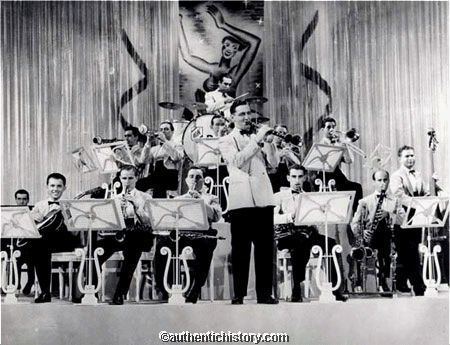
The band's Manager, Cork O'Keefe, was made a Vice President in the corporation and arranged bookings in venues such as Glen Island casino, which they helped popularize, and the Essex House Hotel, that led to their increasing fame via radio broadcasts before and throughout the "swing era" of 1935-1946.
In 1944, Eugenie Baird became "the first girl vocalist ever featured" with the Casa Loma Orchestra.
Radio
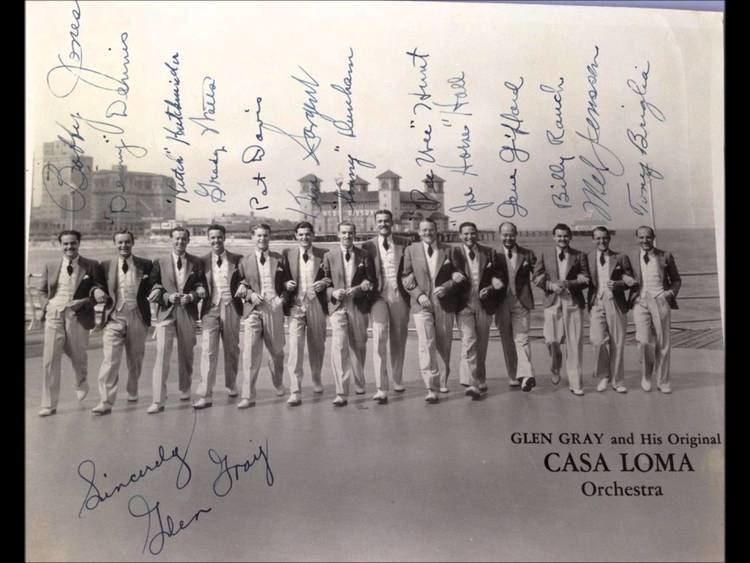
Their mid-1930s appearances on the long-run radio comedy-variety program, the Camel Caravan (introduced with their theme, "Smoke Rings") increased their popularity. Interestingly enough, Gray chose not to conduct the band in the early years, playing in the saxophone section while violinist Mel Jenssen acted as conductor. In 1937, the band overwhelmingly voted in favor of Glen leading the orchestra, and Gray finally accepted the job.
Hits included "Casa Loma Stomp," "No Name Jive" and "Maniac's Ball". Part of the reason for the band's decline is that other big bands included in their books hard-swinging numbers emulating the hot Casa Loma style. In the late 1930s Gray took top billing, and by the mid-1940s (as the other original players left) Gray would come to own the band and the Casa Loma name. For a time, during this period, the band featured guitarist Herb Ellis, trumpeter Bobby Hackett, pianist Nick Denucci and cornetist Red Nichols. By 1950, the Casa Loma band had ceased touring, Gray retired to Massachusetts, and the later recordings on Capitol (beginning with Casa Loma in Hi-Fi in 1956 and continuing through the Sounds of the Great Bands series) were done by studio musicians in Hollywood (with several of Gray's "alumni" occasionally featured). Jazz historian
Recordings
In October 1929, the band debuted on Okeh Records. The following year, they signed with Brunswick where they recorded until 1934. They briefly recorded for Victor in 1933 as "Glen Gray and his Orchestra", the Casa Loma name being under contract to Brunswick. In late 1934, they followed Jack Kapp to the newly formed Decca Records and stayed there well into the LP era when they signed with Capitol. Most of the Okeh's and many of the Brunswick's were out-and-out jazz (albeit very rehearsed) and remain highly collectible.
Film
In 1942, the orchestra made a Warner Bros. short film, Glen Gray and the Casa Loma Orchestra, that featured the songs "Hep and Happy", "Purple Moonlight", "Broom Street" and "Darktown Strutters Ball".
Universal Studios produced a short subject, Smoke Rings, that featured the Casa Loma Orchestra. Released July 28, 1943, the film featured Eugenie Baird, Pee Wee Hunt, and The Pied Pipers. It included the songs Can't Get Stuff in Your Cuff, That's My Affair, and Little Man with the Hammer. The band also appeared in Jam Session (1944).
Songs
No-Name JiveMy Shining Hour · 2011
Casa Loma StompBoneyard Shuffle · 1998
Smoke RingsMusical Smoke Rings · 1947
